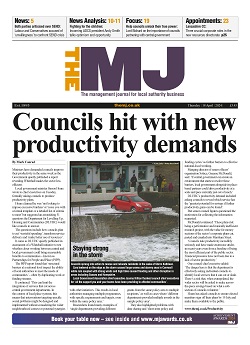It is well known that the landscape for public spending in the UK is changing dramatically. Whilst financial resources are depleting or in some cases expiring entirely, the pressure to maximise the impact of spending is increasing.
So how can this growing challenge be tackled effectively?
Cost Benefit Analysis (CBA) is a tool that can be used to support tough decision-making for those in charge of allocating vital public resources. It is intended as an overarching approach that considers both financial cost savings and wider social impacts.
With CBA, a broad range of potential outcomes can be taken into consideration, with outputs being used to guide policy makers towards the best approach in unlocking spending potential.
A methodology for applying CBA to public service reform initiatives has been devised by a team of analysts based at New Economy, Greater Manchester's economic think-tank and advisor on best policy practice. It allows local partnerships to effectively calculate where the most significant costs and benefits of a project will be and then to decide upon how to fund and implement the initiatives.
The CBA methodology has been in development in Greater Manchester since 2010, with the support of Whitehall economists and analysts. It has been refined through the application and testing of the process to support initiatives such as the Government’s Whole Place Community Budget Pilots – the UK’s flagship scheme for public service reform. CBA has now matured to the point that it has gained backing from national government.
The toolkit, ‘Supporting Public Service Transformation: Cost Benefit Analysis Guidance for Local Partnerships’, was published last month (March 2014) as a supplementary guide to the HM Treasury Green Book. It is being promoted as best practice for use by local authorities and their partners across the UK.
Essentially, CBA enables local authorities to expertly measure value for money, and understand the fiscal, economic and social impacts when evaluating public service proposals. It also enables local partnerships to determine where the benefits of improved service provision will arise and to apportion them to local agencies and to central government departments.
How it works
In simple terms, CBA works like this – at the outset of a project or new initiative, local partnerships consider options for transforming public services, and compare them to the business as usual approach.
The relative costs are identified and the changes in outcomes (e.g. employment, crime, health) are then quantified and monetised.
The toolkit helps not only to understand whether a project is good value for money but also identifies the impact on different agency budgets and helps to understand the benefits of commissioning jointly.
The guidance itself is designed for commissioners, performance officers, finance officers and practitioners. It is supported by:
- The CBA excel model which provides a structured and consistent approach for applying the methodology.
- A Unit Cost Database which includes more than 600 unit cost estimates (mostly national estimates) that can be used to calculate the costs of delivering proactive services and the potential savings in reactive costs that can be achieved.
In particular, CBA can be used to support the development of local area public sector business cases where analytical resources are relatively limited.
It supports the economic case for a project by calculating the overall public value created. It also generates data on cashable savings, risk and financial impacts that feed into the financial case, and which inform the commercial case where procurement is required.
The analysis can therefore be used to answer some key questions that public service reform programmes are concerned with:
- Do the proposed interventions provide value for money?
- By investing in a preventative approach, can local partners reduce the levels of need and therefore budgets in the medium to long term?
- What is the payback period for the project? Is this short enough to invest based on a spend to save approach?
- Where an agency invests in a programme, to what extent are other agencies likely to benefit?
- Are the impacts of a proposal primarily fiscal or a matter of public value?
With growing demand and expectation on public services regularly out of proportion with the available funds, CBA is an informed way to ensure that public spending is maximised for the benefit of the many, rather than the few.
The guide*, ‘Supporting Public Service Transformation: Cost Benefit Analysis Guidance for Local Partnerships’, is available to view here.



